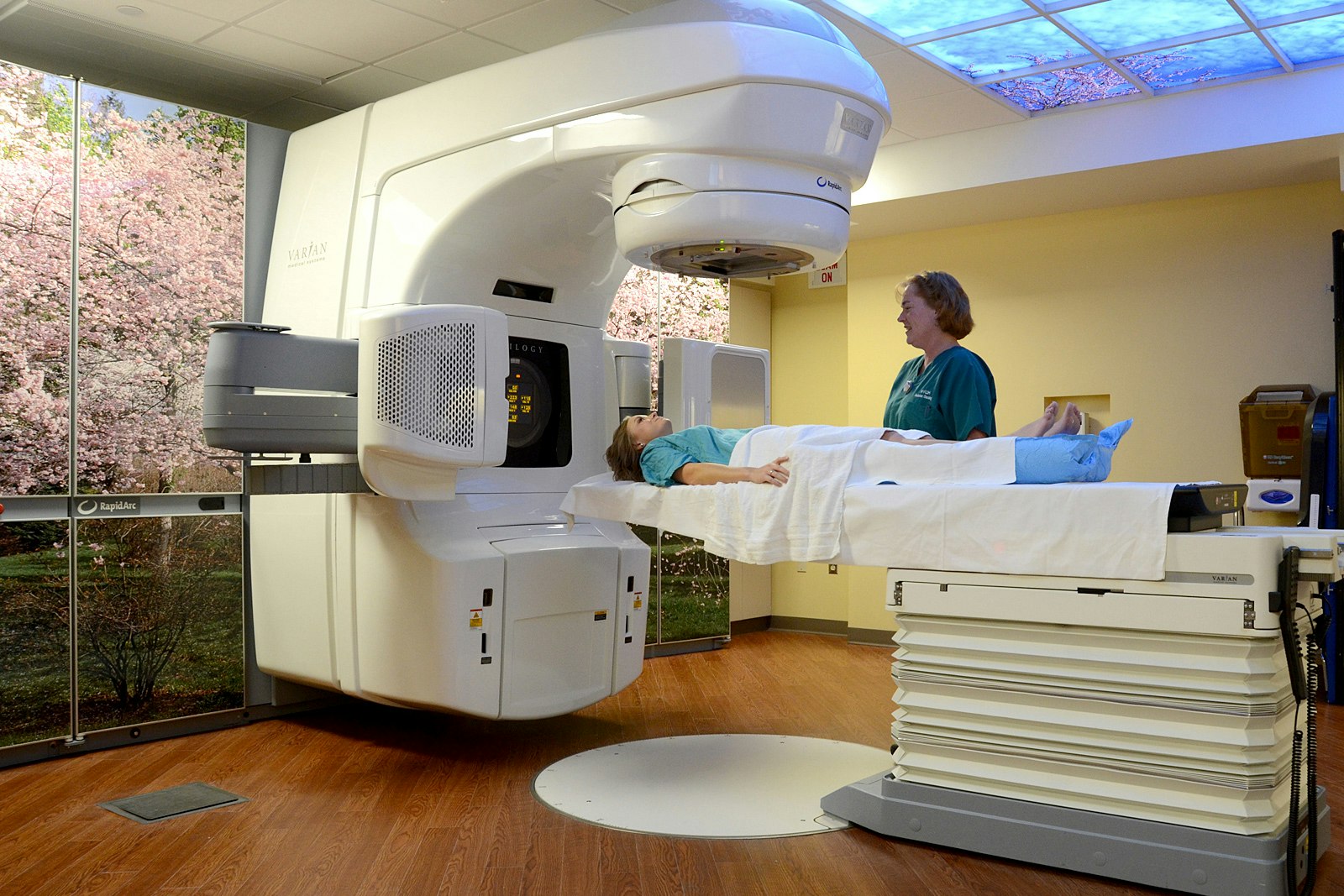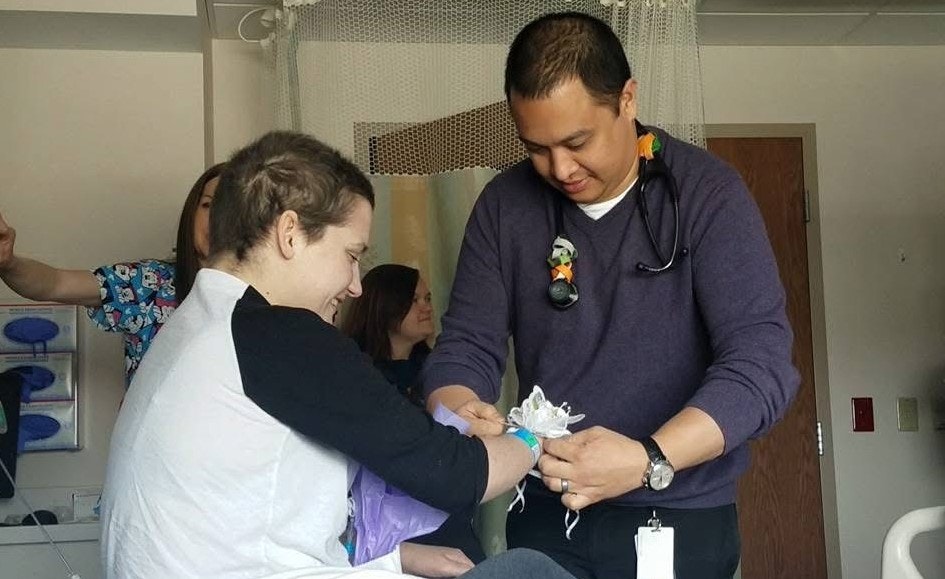The pancreas is a small gland located in the abdomen. It’s surrounded by the stomach, small intestine, liver, spleen, and gallbladder. The pancreas helps with digestion and hormones that control blood sugar levels. Pancreatic cancer is the second most prevalent cancer in the gastrointestinal area. It begins when abnormal cells grow out of control in the pancreas.
Because pancreatic cancer usually doesn’t have symptoms early on, it’s hard to detect or diagnose early. It affects more than 64,050 people in the United States each year.
Our pancreatic cancer specialists at the WVU Cancer Institute focus mainly on pancreatic cancer. We bring you the latest in diagnosing and treating all forms of pancreatic cancer, including access to novel clinical trials. Services and programs are provided in our state-of-the-art facilities by a team who understands that cancer is physically and emotionally challenging.
A cancer diagnosis is never easy to hear, but at the WVU Cancer Institute, you’ll have access to some of the nation’s best in pancreatic cancer care. It’s where you’ll find hope, compassionate care, and the expertise you need to treat cancer.
Types of Pancreatic Cancer We Treat
Our team at the WVU Cancer Institute specializes in evaluating and treating cancerous and noncancerous tumors. Our comprehensive team brings together board-certified surgeons, endocrinologists, medical oncologists, radiation oncologists, highly trained nurses, radiologists, and pathologists with expertise in pancreatic cancer. We work together to make sure your treatment is customized to your specific type of cancer and your needs.
The most common type of pancreatic cancer is pancreatic adenocarcinoma, which forms in the exocrine cells. But pancreatic tumors can also develop in the endocrine cells that create insulin and other hormones and release them into the bloodstream. Our team has expertise in all types of cancerous and noncancerous pancreatic tumors, including:
Exocrine cancer
The pancreas is made up of mostly exocrine cells, which makes this type of cancer the most common within the pancreas. There are different types of exocrine cancers.
- Adenocarcinoma — Most pancreatic cancers are this type of exocrine cancer, accounting for nine out of 10 cases. Signet ring carcinoma is a tumor located in the stomach but can also be found in the pancreas, gallbladder, or bladder.
- Ampullary cancer — The ampulla is the last part of the bile duct and the first section of the intestine. This is a rare cancer that starts in the ampulla of Vater, a small area where the pancreas and the bile ducts connect to the intestine.
- Pancreatoblastoma — This is a rare type of childhood pancreatic cancer that starts in the exocrine cells of the pancreas.
Neuroendocrine cancer
These cancers are rare and are also known as neuroendocrine tumors or islet cell tumors. Islet cells are the hormone-producing cells within the pancreas. Pancreatic neuroendocrine tumors may or may not cause symptoms and include tumors of the gastrin (gastrinoma), insulin (insulinoma), and glucagon (glucagonoma).
Noncancerous tumors
Some tumors are benign, such as intraductal papillary-mucinous neoplasm. However, these tumors can become cancerous. Rare, noncancerous tumors such as mucinous cystadenocarcinoma can develop in the tail of the pancreas and also can become cancerous.
Diagnosing Pancreatic Cancer
There are different ways to diagnose pancreatic cancer. However, because this type of cancer usually doesn’t have symptoms, early diagnosis is rare. It’s important for you to talk with your doctor if you notice any new symptoms, such as abdominal pain radiating to your back, yellowing of your skin (jaundice), light-colored stools, or dark-colored urine.
We use the latest diagnostic tests to diagnose pancreatic cancer and create a personalized plan for your care. These diagnostic tools include:
- Advanced imaging — Doctors use the latest technology, including computed tomography (CT), magnetic resonance imaging (MRI), and positron emission tomography (PET) scans to detect signs of disease and see whether cancer has spread to other parts of the body, such as the lymph nodes.
- Biopsy — If an imaging test shows an abnormal area, doctors can perform a biopsy and examine tissue under a microscope to learn whether cancer is present. Biopsy results help oncologists plan the best treatment for you. Several different biopsy types include image-guided biopsy and fine-needle aspiration.
- Endoscopic ultrasound — This test uses a thin, flexible tube called an endoscope that’s placed down your esophagus and into your stomach. Using an ultrasound device, images are taken of your stomach and pancreas, and a needle biopsy is performed to obtain a diagnosis.
- Lab and tumor marker tests — To help plan for treatment, certain lab tests look at any changes in genes, chromosomes, or proteins. We use a tumor marker test call CA19-9 to help understand how a tumor will respond to treatment.
Treatment for Pancreatic Cancer
From your first visit, our team works with you to address your specific condition and needs. Our goal is to treat cancer at its earliest stage. Because this isn’t always possible with pancreatic cancer, our goal is to develop a plan to remove cancer when possible or prevent cancer from growing. Your treatment approach will depend on the type of tumor and its stage. Your care plan may include:
- Medical oncology — Medical oncology includes chemotherapy, immunotherapy, and hormone therapy. Our doctors use the latest anti-cancer medicines to destroy cancer cells. We also use medicines to slow cancer growth and shrink tumors before surgery. Sometimes, we use medication alongside other treatments, such as radiation, or after surgery to destroy any cancer cells that might remain. If pancreatic cancer has spread to other parts of the body, we can use chemotherapy to control cancer growth and relieve symptoms.
- Palliative surgery — Our surgeons and gastroenterologists use different palliative surgery approaches when cancer has spread and cannot be removed. These surgeries can relieve symptoms and improve quality of life. They include biliary bypass, endoscopic stent placement, and gastric bypass.
- Radiation oncology — We use radiotherapy treatments to target, destroy, and shrink cancer. The treatments use a linear accelerator to produce precise, high-energy rays that target the exact area of cancer and spare healthy cells.
- Surgery — Surgery can help us diagnose, stage, and treat many tumors. Our surgeons are among the few in the country who perform a robotic Whipple procedure, which removes the head of the pancreas, the first part of the small intestine, the gallbladder, and the bile duct. Surgeons then reattach the remaining organs to allow food to be digested normally. Other surgical approaches include distal pancreatectomy, an approach that removes the pancreas’ body and tail, or a total pancreatectomy to remove the entire pancreas.
- Targeted therapy — Our doctors send medicine and fluids through a catheter into your bloodstream. We use targeted therapy, which is different than chemotherapy, to treat some types of advanced pancreatic cancers. Some targeted therapies may be an option, including a drug that targets a protein called EGFR, PARP, or NTRK inhibitors. These are often combined with chemotherapy.
Resources for Pancreatic Cancer
We believe cancer care goes beyond the medical diagnosis and treatment. That’s why you can access many resources that may help answer questions and connect you to others.





